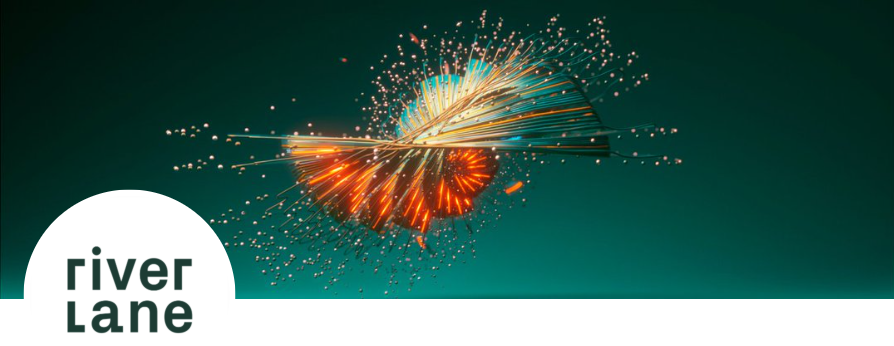Riverlane points to 2025 as ‘year of quantum’
Could 2025 be the year of quantum?
Can we think about the next 12-months as a period of solid progression and (not just innovation, but also…) actual tangible developments in quantum computing such that organisations across every vertical can start to think about where they might apply massively accelerated power across their IT estates?
Riverlane thinks so.
The company says that 2024 has been full of milestones in quantum error correction (QEC), but we are still at a tipping point in the QEC era where we need to reach the one million operations threshold (a point known as the MegaQuOp) to surpass classical supercomputers and unlock quantum computing’s transformative power.
Riverlane notes the arrival this year of what it calls a ‘landmark QEC paper’, presenting the results of the first comprehensive hardware implementation in quantum computing using the company’s decoder chip. This was recognised as a breakthrough for QEC and is seen as the world’s first dedicated ‘QEC chip’ implemented on ASIC and FPGA hardware.
What is quantum error correction?
By balancing speed, accuracy and resource efficiency, it set a new standard for quantum error correction when it was first published on arXiv in September 2023.
“Quantum error correction is a set of techniques used to protect the information stored in qubits from errors and decoherence caused by noise. Decoding is one of these techniques. Large-scale quantum computers will generate high volumes of data every second, scaling to 100TB/s, and the system must decode this data faster than it accumulates to prevent errors from building up and rendering calculations useless,” said Riverlane CEO, Steve Brierley. “Riverlane’s quantum decoder is the central element of Riverlane’s core product, the ‘Quantum Error Correction Stack’, Deltaflow, responsible for identifying underlying errors in a quantum computer and issuing corrective measures.
According to Earl Campbell, VP of quantum science at Riverlane, Deltaflow not only decodes fast enough to keep up with a quantum computer but also only uses a tiny resource footprint.
He suggests that this combination significantly impacts the quantum computer where the decoder’s high performance, small-area features provide easy integration and low-power consumption of less than ten mW – about the same as a smartwatch in sleep mode.
“Performing quantum error correction is a critical hurdle in realising practical quantum computers, and Riverlane’s scalable, high-performance quantum decoder is a significant advance. The ability to decode errors in real-time while maintaining a minimal hardware and energy footprint is exactly the kind of innovation we need to move closer to fault-tolerant quantum computing.” said Stephen Bartlett, professor of physics at the University of Sydney.
Collision Clustering (CC) decoder
At its release, the novel Collision Clustering (CC) decoder was the most powerful in the world and this paper was among the first to demonstrate that QEC could provide a viable route to fault-tolerant quantum computing. Since then, the industry has embraced QEC, with companies like Google, Quantinuum, and QuEra also making significant QEC advancements.
But there is more work to be done before we get to practical applications. The next big milestone? Using real-time QEC to achieve a ‘MegaQuOp’. This is where quantum computing’s first practical use cases beyond the supercomputing threshold will begin to emerge.
“Over the past 20 years, qubit error rates have halved every 12-18 months. They have now got to the breakeven point where QEC starts to work. Adding QEC means we will be able to decrease the error rates by 10,000x reaching 1mn error-free operations (MegaQuOp) within the next 2-3 years,” said Brierley.
In order to build a Mega QuOp quantum computer, Brierley says we need two things:
- 1,000 – 10,000 physical qubits with physical error rates below the QEC breakeven point.
- The QEC stack: The (classical) compute needed to process the QEC data in real-time.
The team at Google, for example, now have 100 physical qubits at the breakeven point (and will have by next year gone sufficiently below the breakeven point). Its roadmap gets the team to point 1 above i.e. in the next 2-3 years this continues to look credible – and the next generation of quantum computers is something Riverlane plans to address in 2025.
Riverlane’s recent QEC report explains in more detail how crossing into the million error-free quantum operation regime presents a pivotal moment in quantum computing, when exactly the industry expects to achieve this critical milestone and predictions for what this will look like.
“Many people don’t realise that in a quantum computer, a classical error correction layer is essential to keep the quantum machine on track. For many years, there has been debate as to whether conventional computers can perform this complex task fast enough to keep up. This beautiful work from the Riverlane team settles the question. Fortunately, the conventional circuits can keep up,” said Simon Benjamin, professor of quantum technologies at Oxford University.
Riverlane says that QEC implementation now a top priority for every quantum computer and control system maker. The team looks forward to driving the continued progress.




